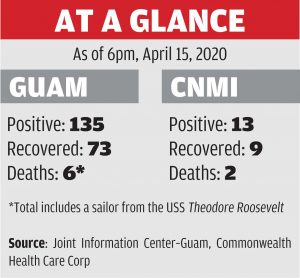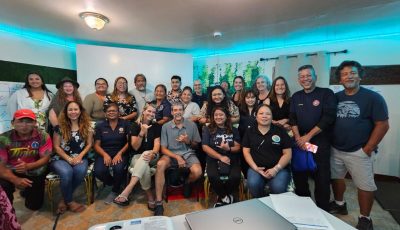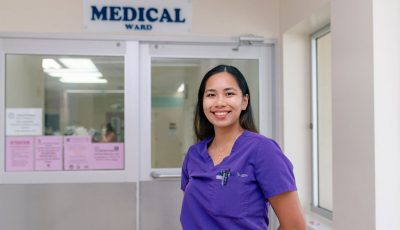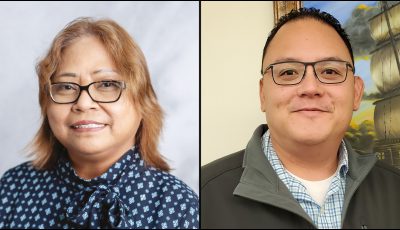CHCC: 9 recovered, released
The first few individuals who tested positive for COVID-19 in the CNMI have already recovered and been released from the Kanoa Resort quarantine site in Susupe. They are now back in their homes while being closely monitored under the Commonwealth Healthcare Corp.’s Text Illness Monitoring system.
As of April 14, 2020, the CNMI has submitted 59 specimens for COVID-19 testing. Of these 59 specimens, 55 have been processed, resulting in 13 positive specimens, 42 negative specimens. CHCC awaits the results of four specimens.
In a recent interview with CHCC chief executive officer Esther Muña, she confirmed that, of the 13 that have tested positive for the coronavirus, two have passed away, nine have recovered, while 11 remain in isolation. Of the 11 in isolation, two have been confirmed positive while the nine are awaiting their results.
Muña said that five tests are being sent to Guam every day. If there are more than five specimens for testing and if those numbers beyond five aren’t considered high priority, those specimens are sent to the Diagnostic Laboratory Service in Hawaii. Muna said that Hawaii processes it and CHCC receives the results “pretty fast” since CHCC is connected to their network.
Test kits from Korea
According to Muna, once all 60,000 test kits arrive, CHCC will have no problem testing everyone on island. Since there are only 20,000 test kits that are currently on island, CHCC wants to make sure that testing should be done only on those who are in critical need.
Testing 60,000 people in one day isn’t ideal, Muña said, and will take time, but since contact tracing is done once an individual shows any COVID-19 symptoms, this will help the hospital determine who needs to get tested immediately and who doesn’t.
“Health care workers with symptoms and [people who are in] hospital and have symptoms, we want to make sure that those people get access to this [test kits] immediately,” said Muña.
In an interview with KUAM News, Muña said that the test kits won’t only be for Saipan residents, but also for those on Tinian and Rota.
Muña added that the test aren’t U.S Food and Drug Administration-approved, so it’s not meant to be used in clinical care. That isn’t bad news though, as the test are Korea FDA-approved so it will serve the purpose of surveillance, and primarily for public health activities, including containment of the virus.
“It’s more power to CHCC to be able to determine that there’s a particular case and further protecting from further widespread of the virus in our community,” said Muña.
Should there be a false negative, Muña stated that anything coming back will require quality check. “That’s the reason why the pathologist is here, to do the quality checks,” said Muna.
The Korean pathologist will be regulating the equipment from Korea, and testing previous positive cases that have already been determined to ensure that it is “calibrated and tested.” She will also teach CHCC’s staff on how to use the equipment, shadowing the staff, and then later stepping back so the staff will be able to complete the testing. She will be staying on island for two weeks.
Alternate care site
Gov. Ralph DLG Torres took to Facebook, again, via a livestream video to let the community know that Kanoa Resort will be turned into an alternate care site to treat confirmed and suspected COVID-19 patients during their isolation period.
They will start construction today.
Torres hopes the construction for the alternate care site would be done within the next three to four weeks.
“I know that time is of the essence but…we are making sure we are doing everything we can to make our facility up and running,” said Torres. “I hope we don’t have to use it, but if do need it in a month, we will have this up and running.”
Warren Villagomez, COVID-19 Task Force chairman, commends all the work that the engineering and construction companies have done in order to transition the resort into an alternative medical care site.
“There are multiple aspects of projects that the governor and lieutenant have outlined for us to take on,” said Villagomez. “With our partners, Federal Emergency Management Agency, U.S. Department of Health and Human Services, Centers for Disease Control and Prevention, and central government we’re able to facilitate all the efforts and coordination.”




























